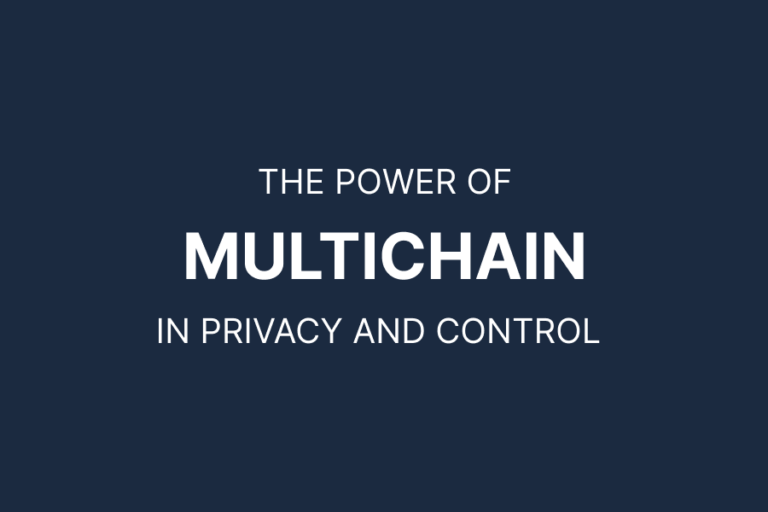The blockchain protocol that has emerged as a powerful catalyst for communication and collaboration is Multichain, as it was designed with the explicit purpose of facilitating seamless communication within and between organizations, carving a niche for itself by providing robust solutions for the creation of private blockchains.
At the heart of Multichain’s appeal lies its effective API, a flexible tool that empowers developers to craft blockchain solutions tailored to their specific needs. It’s like having a magic wand that significantly reduces the development time, streamlining the process by nearly 80%. In a fast-paced digital landscape where time is of the essence, this efficiency is nothing short of a game-changer.
The level of control
One of the defining characteristics that sets Multichain apart from its public blockchain counterparts is the level of control it affords to its users. Unlike public blockchains, where transparency reigns supreme, Multichain provides organizations with complete control over their blockchain ecosystems. This attribute is particularly well-suited for entities dealing with highly-sensitive, high-privacy financial transactions, such as those within the banking sector.
Also, Multichain emerges as a beacon of trust, as it offers organizations the ideal platform to orchestrate their blockchain-based endeavors without compromising on data privacy and security. Whether it’s streamlining internal operations or fostering collaboration with external partners, Multichain’s versatility knows no bounds.
Multichain reigns supreme as the go-to solution for organizations that demand the highest standards of security and control in their blockchain initiatives. It’s not just a protocol; it’s a guardian of digital fortresses, a bridge to seamless communication, and a key to unlocking the vast potential of blockchain technology in the private sector. As we navigate the ever-evolving landscape of blockchain solutions, Multichain stands tall as a testament to innovation and a beacon of hope for organizations that dare to dream big in the world of high-stakes, high-privacy financial transactions.
Interoperability
A term that often resonates with industry insiders and enthusiasts alike is interoperability, but what exactly does this jargon-laden term entail, and why is it garnering so much attention? Interoperability, in its essence, is the art of enabling different blockchain networks to communicate seamlessly with one another. Think of it as a universal language that allows these distinct chains to converse and share data harmoniously. This capability isn’t confined to networks within the same ecosystem; it extends its reach to bridge connections between entirely different blockchain networks. The result? Enhanced functionality, amplified efficiency, and an expansive canvas for innovation.
Imagine a world where different blockchain networks are like separate islands, isolated and unable to exchange information. Such a scenario would stifle progress and limit the true potential of blockchain technology. This is where interoperability steps in as a game-changer, tearing down the walls between these islands and forging connections that transcend boundaries.
Handshaking
Now, let’s review what are the mechanics of achieving interoperability within the framework of a multichain network. Multichain employs a fascinating process known as “handshaking” to establish this connectivity. In this intricate dance, each node in the network is represented by an address and a set of procedures. These nodes engage in a digital exchange, sending messages and requests to one another. If a node fails to receive the correct response in return, it’s akin to a handshake gone awry, and the connection is promptly severed.
Successful handshaking, on the other hand, paves the way for building a vast and interconnected network of blockchains. This network, often tailored for enterprise use, is a testament to the power of interoperability in action. It’s a symphony of chains working in harmony, orchestrated by the language of interoperability.
Challenges
However, like any grand endeavor, achieving cross-chain interoperability is not without its fair share of technical challenges. First and foremost, there’s the conundrum of validating transactions. Different blockchain networks may employ diverse consensus mechanisms or employ innovative scaling solutions such as sharding or state channels. These variations can pose substantial hurdles when trying to harmonize them into a cohesive interoperable ecosystem.
Adding complexity to the mix, some networks may adopt dissimilar programming languages, data structures, and architectural blueprints. These differences add layers of intricacy to the task of implementing interoperability, akin to translating a poem into a completely foreign language while retaining its essence.
Despite the technical hurdles, the quest of interoperability remains at the forefront of blockchain innovation, driving the industry towards a future where the possibilities are as boundless as the chains themselves.



